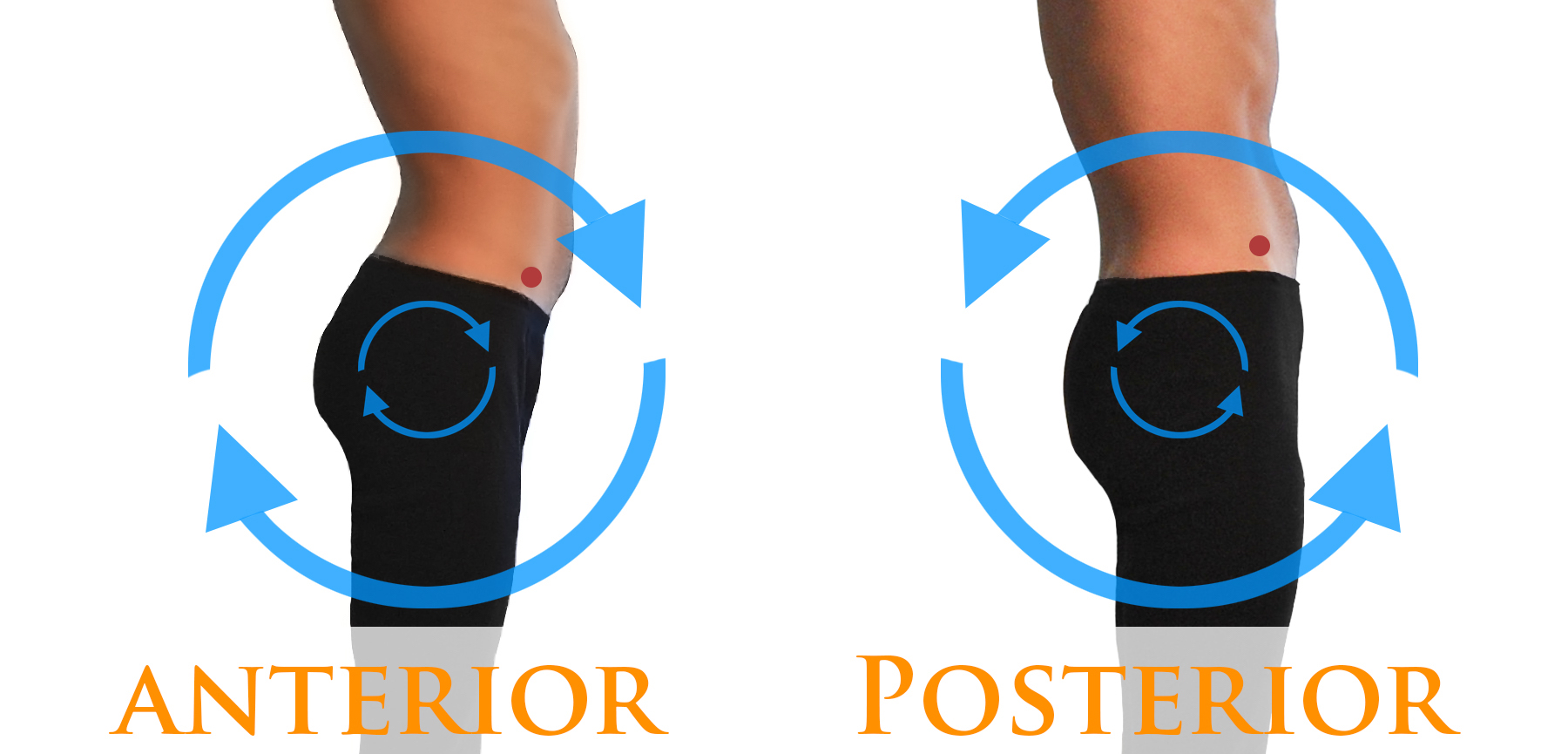Your Pelvis is Killing Your Spine
FitnessLifestyle November 12, 2024 Damon Mitchell

The world is full of uneven surfaces. It doesn’t help that we navigate that world with jacked up pelvises, but we all do. Now you know. Your shoes aren’t helping, but that’s a whole ‘nother blog.
This is gonna be tough to stomach, but the chances you have a pelvic imbalance are high.
There are more than two ways your pelvis can cause your spine problems, but we’ll look just as the two most common; anterior or posterior faults.
Also, we’ll look at what you can do about it, but first…
The Problem
We’re not talking about fatigue. Everybody will fault in some way when they fatigue. We’re talking about walking around in the world with an imbalance of pressure on your spine due to the alignment of your pelvis.
The good news is, you can live with these variances for the most part. Otherwise, we’d have people collapsing all over the place.
The challenge for the pelvis maligned comes into play when the owner of said pelvis attempts to carry a load beyond what the spinal discs can take.
It could be a heavy load lifted out of alignment or one carried longer than the spine can sustain. The result could be everything from a strained muscle to a crushed disc.
Without getting too lost on all the descriptions for disc-trauma, understand that any trauma to the discs is bad. Discs have enough with even wear and tear.
Trauma is a bell that cannot be un-rung. Swelling can go down, but damage to discs is bad. We live with it until the bitter end.
Anterior Tilt
An anterior pelvic tilt is the most common fault we see. This is where the pelvis rotates creating a sway in the lower back.
How far is too far is a little complicated, but the short answer is any sway beyond the natural curve of your spine. We’ll come back to identifying “natural,” but this is the fault that looks like the twerk.
Identifying this is more than just identifying someone’s form. Some people have very developed glutes, but maintain good pelvic alignment. The opposite, of course, is possible too.
While tilting your pelvis is not the end of the world, if you live with a tilted pelvis, you may want to work on adjusting it. The answer to the question, how things become tilted? is as varied as the people walking around this way.
For most, it’s the seated lives we live. Sitting tightens our hip flexors, the muscles that sorted the distance between our thighs and our bellybuttons.
In super-simple terms, it’s like our hips stay in that seated position when we stand, with the hip-flexors shortened.
Posterior Tuck
Both are tilts, but to simplify we’ll call one a tilt, the other a tuck.
This is the dreaded “butt wink,” as it is sometimes referred. The wink happens when squatters drop deep into a squat. At the bottom, their posterior appears to tuck under, like a dog tucking his tail.
Winking and tucking live in the same place, but there is a difference between the two. Someone who winks is not necessarily posteriorly tucked.
A person with this fault not only winks but walks around in that tail-tucked position. It looks painful when you see it. Both, however, can hurt the spine. A little wink is also not the end of the world.
Many will wink when they hunker down if they can get into a full squat. The danger is when the discs of the spine are unevenly loaded.
For the person who walks around in a tucked position, the wear and tear on the discs is uneven, so the net effect over time can be similar or the same.
Normal Alignment
It is possible to straighten your alignment. Most would advise you to stretch, depending on anterior or posterior faulting.
The traditional school of thought is lengthening the hip flexors for anterior faulting, hamstrings, and abdominals for posterior.
There’s nothing wrong with stretching, but if the goal is to prevent injury, that won’t be enough. Stretching applies flexibility from end to end of the stretched muscle belly or fascia. The net result of your efforts will be a muscle or fascia that lengthens better when stretching.
What it won’t necessarily do, in the case of your back, is teach those muscles to lengthen under strain, when it counts most. Instead, try moving under very light loads working your way to heavier ones.
Go slow. You may find benefit in working with a foam roll or some such pressure device prior to your lift. A little pressure to those hip flexors for you tilters can do wonders to “shut them off” before you squat.
Tuckers should de-emphasise the six pack and the hammies. Read more on using a foam roll here.
Last thought: Don’t get too hung up trying to straighten out your pelvis overnight. It’s taken your whole life to get it wound up in any direction.
It might not take you as much time to unwind it, but it won’t happen with one session or even fifty. We live with our imbalances like we live with injuries. They subside, but can come back without maintenance.
If you have tight hip flexors, you will revisit them in time… or not. You can ignore these things too. Many people do.
Many people also just let their bodies fall apart. Not you, though. You just read this whole blog.
Good job.





